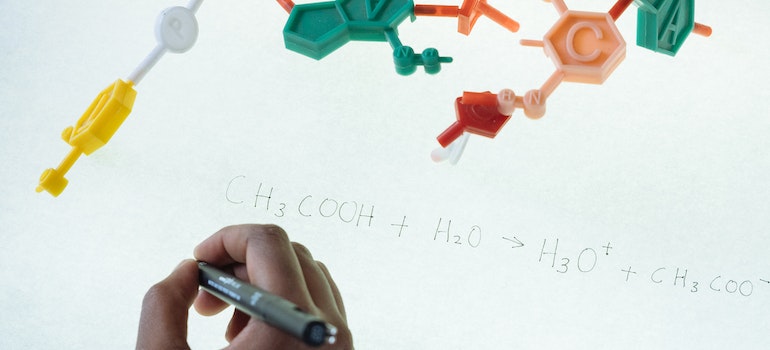Our lives are woven tapestries of interconnected threads. As we traverse the winding roads of existence, some threads represent the positive aspects of our humanity – love, compassion, and joy. However, others echo darker shades of our experiences – despair, aggression, and violence. As our experts at Harmony Ridge Recovery Center WV say, a number of these more challenging threads are often intertwined with substances like drugs and alcohol. This exploration seeks to understand how drugs and alcohol fuel violent behaviors but also emphasizes the fundamental need for compassion and empathy in addressing this complex issue.
A compassionate perspective acknowledges that substance abuse is a complex issue, shaped by a multitude of influences ranging from personal to societal to biological. Let’s delicately unravel this intricate tapestry, one thread at a time.
The effects of drugs and alcohol on the brain
In the tapestry of substance abuse and violent behavior, the most prominent thread is the psychopharmacological connection. Addiction is a serious issue with a thorough chemical explanation. The substances themselves can cause physiological changes in the brain, influencing mood, perception, and behavior.
Alcohol, for instance, acts as a central nervous system depressant, impairing cognitive functions, reducing inhibitions, and distorting judgment. This combination can sometimes create a volatile cocktail, leading individuals to act out aggressively, as they may misinterpret social cues or feel disinhibited in expressing pent-up frustrations.
Drugs like methamphetamine, on the other hand, can induce a hyperactive and paranoid state. These psychostimulants affect the brain’s reward system, flooding it with dopamine, a neurotransmitter responsible for pleasure. However, prolonged use can result in dopamine depletion, making the individual irritable and aggressive.

The systemic link
Another critical thread is the systemic link, connecting socio-economic factors with substance abuse and violent behavior. Poverty, lack of education, and limited access to healthcare can drive individuals into the clutches of drug and alcohol abuse, providing a misguided escape from the shackles of systemic oppression.
Once ensnared in this cycle, the scarcity of resources can lead to violent behavior, stemming from the desperate need to secure the next dose or the perceived need to protect oneself in a society that appears hostile.
The psychological spiral
The psychological spiral is a thread that reflects the co-occurrence of mental health issues, substance abuse, and violent behavior. Individuals battling mental health conditions may resort to drugs or alcohol as a form of self-medication, attempting to alleviate their psychological pain. Internal pain is one of the most prominent reasons for falling into the trap of substance abuse and addiction. The pain can get so intense that it can lead to suicidal thoughts and actions. For many people, self-medicating with substances can seem like the only reasonable option at times.
However, this self-medication can exacerbate the mental health issue, making symptoms more severe and leading to increased impulsivity or agitation. These heightened states of distress can trigger violent outbursts, creating a tragic feedback loop that entangles the individual deeper within the tapestry of substance abuse and violence. There is a need for different addiction therapy options once a person gets into a psychological spiral they can’t get out of.

The cycle of trauma
Lastly, besides the fact that drugs and alcohol fuel violent behaviors, there’s the cycle of trauma. This thread intertwines the experiences of past abuse or trauma with a higher likelihood of substance abuse and subsequent violent behavior. Individuals who’ve experienced trauma, particularly during formative years, may develop maladaptive coping mechanisms, such as substance abuse, to numb their pain.
This abuse, however, can lead to further violence, either as an aggressor or a victim. The cycle continues, perpetuating a pattern of trauma, substance abuse, and violence that may span generations unless broken by intervention and healing.
How do drugs and alcohol fuel violent behaviors?
In a world where individuals grapple with their inner demons, the role of drugs and alcohol can be that of a formidable catalyst, exacerbating the proclivity toward violence. Our experts at rehab facilities in West Virginia delve into the intricate tapestry that weaves together the statistics on drug and alcohol abuse with the unsettling link to crime, particularly the alarming connection between substance use and acts of violence.
Unveiling the statistics
Behind the stark numbers lies an undeniable truth: drug and alcohol abuse intertwines with criminal behavior in a disquieting manner. According to recent studies, a substantial proportion of individuals involved in criminal activities report a history of substance abuse. Statistics show that around 80% of incarcerated individuals in the United States have struggled with substance abuse or addiction at some point in their lives. Such a staggering figure accentuates the urgent need to address the deep-rooted connection between drugs, alcohol, and crime.

The tangled web of substance use and violent crime
Exploring the link between substance use and violent crime reveals a complex web of intertwined factors. Substance abuse can fuel violent behaviors through various mechanisms, including:
- the alteration of brain chemistry
- impaired judgment
- heightened aggression
Intoxication, whether from drugs or alcohol, can lower inhibitions and distort one’s perception of reality, often resulting in impulsive and aggressive actions.
While not everyone who abuses substances turns to violence, the risk is undeniably heightened. Studies consistently indicate that individuals with substance use disorders are more likely to engage in violent behavior than those without such disorders. The connection is particularly pronounced when considering specific substances known for their capacity to induce aggression or paranoia.
Domestic violence and substance abuse
Within the private confines of homes, a disturbing alliance often emerges between domestic violence and substance abuse. This subheading uncovers the intricacies of this shadowed union, shedding light on the relationship between substance abuse and the alarming prevalence of domestic violence. Through a compassionate lens, we explore the complexities surrounding this issue, acknowledging the profound impact it has on individuals, families, and communities.
The ties that bind
Studies consistently reveal a strong correlation between substance abuse and domestic violence. Substance abuse, whether fueled by alcohol, drugs, or a combination of both, can significantly increase the risk of violence within intimate relationships. Research suggests that substance abuse is a contributing factor in approximately 50% of domestic violence cases.
The intricate ties between these two phenomena are multifaceted. Substance abuse can heighten aggression, impair judgment, and intensify the severity and frequency of violent episodes. Moreover, the cycle of abuse can become further entrenched as substances are used as a means of control or as an outlet for emotional turmoil.

Understanding the complexity of substance abuse and domestic violence
While it is crucial to recognize the link between substance abuse and domestic violence, it is equally important to acknowledge the complexity of each individual’s circumstances. Substance abuse often arises from a variety of underlying factors, including past trauma, mental health challenges, or a history of violence within the family. These intertwined issues can create a volatile environment where the cycle of abuse and addiction feed off each other.
The impact of substance abuse on the family
Substance abuse destabilizes the family structure, undermining trust, communication, and emotional well-being. The constant presence of addiction casts a shadow of unpredictability as the affected individual’s behavior becomes increasingly erratic and unreliable. Family members often find themselves walking on eggshells, constantly navigating an environment fraught with tension, fear, and emotional turmoil.
Children, in particular, bear a heavy burden in households affected by substance abuse. They face disrupted routines, neglect, and emotional or physical abuse, which can inflict lasting scars on their development and well-being. The nurturing role of the parent may be compromised, leaving children feeling abandoned, insecure, and vulnerable to their own struggles with addiction in later life.

Poor finances contribute to the problem of domestic violence and substance abuse
Financial strains also plague families impacted by substance abuse. The costs associated with acquiring drugs or alcohol, coupled with job loss, legal troubles, and medical expenses, can push families into financial ruin. This, in turn, perpetuates a cycle of stress, conflict, and further strain on relationships.
Yet, amidst the chaos, families affected by substance abuse often display remarkable resilience and a yearning for healing. Support networks, such as therapy, counseling, and peer groups, can offer a lifeline of guidance and understanding. Family members can learn to set boundaries, practice self-care, and develop coping strategies to navigate the challenges they face.
Risk factors for substance and violent behaviors
In the intricate tapestry of drug and alcohol-related violence, a multitude of risk factors intertwines, shaping a landscape where aggression and despair collide. Delving into this complex realm, we explore the factors that compassionately and creatively shed light on the pathways leading individuals toward such destructive behaviors.
One pivotal risk factor lies in the clutches of addiction itself. Substance abuse alters brain chemistry, impairing judgment and inhibitions while fostering a relentless cycle of craving and dependency. As individuals sink deeper into the grips of addiction, their desperation intensifies, propelling them toward acts of violence as they seek to obtain or protect their substances.
As for others, they include:
- Post-traumatic stress disorder
- Poverty
- Mental health issues
- Environmental factors
- Family dynamics
PTSD
Trauma, both past and present, casts a long shadow over the risk landscape. Those who have endured physical, emotional, or sexual abuse often turn to drugs or alcohol as a means of self-medication, attempting to numb their pain or escape their traumatic memories. The wounds of trauma can fuel a vicious cycle, intertwining with substance abuse and manifesting in violent outbursts as individuals struggle to navigate the overwhelming burden of their experiences. This is especially prominent in veterans, and if drinking alcohol leads to violence, it can be a telltale sign of PTSD.

Poverty
Socioeconomic disparities also loom large as risk factors. Communities grappling with poverty, limited access to education, and lack of opportunity often become breeding grounds for substance abuse and violence. Desperation, a sense of hopelessness, and limited resources can push individuals to engage in criminal activities or engage in violent behaviors as they seek to survive or obtain their next fix.
Mental health disturbances
Mental health challenges weave another strand into this complex tapestry. Conditions such as depression, severe anxiety, and personality disorders can exacerbate substance abuse and increase the risk of violent tendencies. Unaddressed mental health issues combined with the disinhibiting effects of drugs or alcohol can unleash a perfect storm, heightening the likelihood of volatile and aggressive behavior.
Environmental factors
Beyond the intricate internal struggles, external forces come into play, shaping the risk landscape for substance use and violence. These environmental factors, compassionate and diverse in nature, contribute to the complex interplay between individuals and their surroundings. In this exploration, we shed light on how these factors further amplify the risk, intertwining with personal vulnerabilities.
Peer pressure and social influence weave a powerful thread within the fabric of risk. Individuals, especially during adolescence and young adulthood, are highly susceptible to the influence of their social circles. The desire to fit in or seek acceptance can drive individuals towards substance use, as well as engage in violent behaviors as a means to conform or prove themselves.

Community shapes people
The availability and accessibility of substances form a crucial environmental factor. Communities plagued by drug trafficking, easy access to alcohol, or limited resources for prevention and treatment services create an environment conducive to substance abuse and subsequent violence. The normalization of substance use within these communities further perpetuates the risk, as individuals may succumb to the pressure or find it challenging to seek alternative paths.
Community violence and social unrest cast a long and dark shadow over the risk landscape. Living in neighborhoods riddled with crime, gang activity, or systemic injustices amplifies stress, fear, and a sense of hopelessness. These environmental stressors can drive individuals towards substance use as a coping mechanism, as well as fuel violent behaviors as a means of survival or protection.
Family plays a major role
Family dynamics and upbringing form another influential layer. Growing up in households where substance abuse and violence are prevalent significantly heightens the risk of individuals perpetuating these patterns. Children exposed to such environments may internalize the normalization of these behaviors, leading to a higher likelihood of engaging in substance use and violence themselves.
This cycle perpetuates itself as they pass on these patterns to future generations. Moreover, the absence of positive role models and healthy coping mechanisms within the family unit exacerbates the issue, leaving individuals ill-equipped to navigate challenges without resorting to violence or substance use. To break this cycle, comprehensive interventions are necessary, including family therapy, education on healthy relationships and communication, and access to rehabilitation and support services. By addressing the root causes within the family unit, we can create a nurturing environment that promotes healing, resilience, and, ultimately, harmony.
The role of childhood trauma
Childhood trauma casts a long and enduring shadow over individuals’ lives, often leaving lasting scars that reverberate through adulthood. Its role in shaping the risk of substance use and violence is profound and multifaceted. A lot of people in REBT for addiction have experienced severe childhood trauma that contributed to their substance abuse. When children experience abuse, neglect, or other traumatic events, their coping mechanisms become strained, and they may seek solace or escape through substances.
Childhood trauma disrupts healthy development, impairing emotional regulation, self-esteem, and coping skills. As individuals grow older, they may turn to drugs or alcohol as a means to self-medicate the deep-rooted emotional pain resulting from their traumatic experiences. Substance use serves as a temporary escape, a numbing agent that offers relief from the haunting memories and overwhelming emotions.

Maladaptive behaviors stemming from childhood trauma
Furthermore, the link between childhood trauma, substance use, and violence is intricately intertwined. Trauma often manifests in maladaptive behaviors and distorted thought patterns, leading individuals to engage in violent acts as a means of self-defense or control. The altered perception of the world, coupled with the disinhibiting effects of substances, increases the risk of impulsive and aggressive behaviors.
Prevention and treatment of substance abuse
Understanding how these threads weave together to fuel violent behaviors is the first step. But with understanding must come action. It’s essential that interventions are grounded in compassion and empathy, recognizing the pain and struggle that often underpin these behaviors.
Treating substance abuse and associated violent behavior is not just about punitive measures. It’s about providing comprehensive support that addresses the root causes. For instance, cognitive-behavioral therapy can help individuals develop healthier coping mechanisms and manage their triggers. That’s why CBT is a good approach to addiction treatment. Rehabilitative programs can address the physiological aspects of addiction, and social support systems can provide much-needed care and understanding.
Addressing social problems
The systemic link requires addressing societal inequalities, providing equal access to education, and healthcare to all, thereby eliminating some of the triggers for substance abuse and subsequent violence.
For the psychological spiral, the integration of mental health care into substance abuse treatment plans is vital. Mental health professionals can work in tandem with addiction counselors to provide a holistic approach to recovery.
Breaking the cycle
Breaking the cycle of trauma is possibly the most challenging but perhaps also the most rewarding. Trauma-informed care, which understands, recognizes, and responds to the effects of trauma, can help individuals begin to heal, reducing their need to turn to substances or violence. There are therapies that have shown promise in treating trauma and should be incorporated into recovery plans where applicable. They include:
- DBT for addiction
- Eye Movement Desensitization and Reprocessing (EMDR)
- Trauma-focused cognitive-behavioral therapy
- Holistic therapy for addiction
- Motivational interviewing
School involvement
Prevention efforts also play a crucial role. By implementing school-based programs that educate children about the risks of substance abuse, we may be able to preemptively cut some of the threads that lead to this problematic tapestry. Similarly, community initiatives can provide supportive networks and alternatives to drug and alcohol use. This is the only way to help young people who need help and create a better future for everyone.
Lastly, public policy measures, such as the decriminalization of certain substances, can shift the focus from punishment to treatment. This shift can help dismantle the stigma surrounding substance abuse, making it easier for individuals to seek help.

Compassion and empathy
As we continue to navigate this intricate tapestry, it’s essential to approach each thread with compassion and empathy. Remember, it’s not about blaming or punishing the individuals who’ve found themselves entangled in this web but about understanding and addressing the root causes that led them there.
The lens of compassion allows us to see that behind every thread of violent behavior fueled by drugs or alcohol, there is a story of struggle and pain. By addressing these struggles, we can begin to unweave these threads, creating a tapestry that reflects the best aspects of our shared humanity – love, compassion, understanding, and above all, hope for a better tomorrow.
Drugs and alcohol fuel violent behaviors—let’s find a way to stop them
It is evident that drugs and alcohol fuel violent behaviors, unraveling the fabric of harmony in our society. We must recognize that addiction is a complex issue that affects not only the individual but also their loved ones and communities. Instead of stigmatizing those struggling with addiction, it is crucial to foster empathy, support, and accessible treatment options. By addressing the root causes of substance abuse and providing rehabilitation and mental health services, we can create a nurturing environment that promotes healing and helps individuals find healthier coping mechanisms. Together, we can build a world where understanding and compassion triumph over violence and restore harmony to our communities.
References:
- https://nida.nih.gov/publications/drugfacts/criminal-justice
- https://www.ncbi.nlm.nih.gov/pmc/articles/PMC6252247/
- https://www.ojp.gov/pdffiles1/nij/grants/194123.pdf



